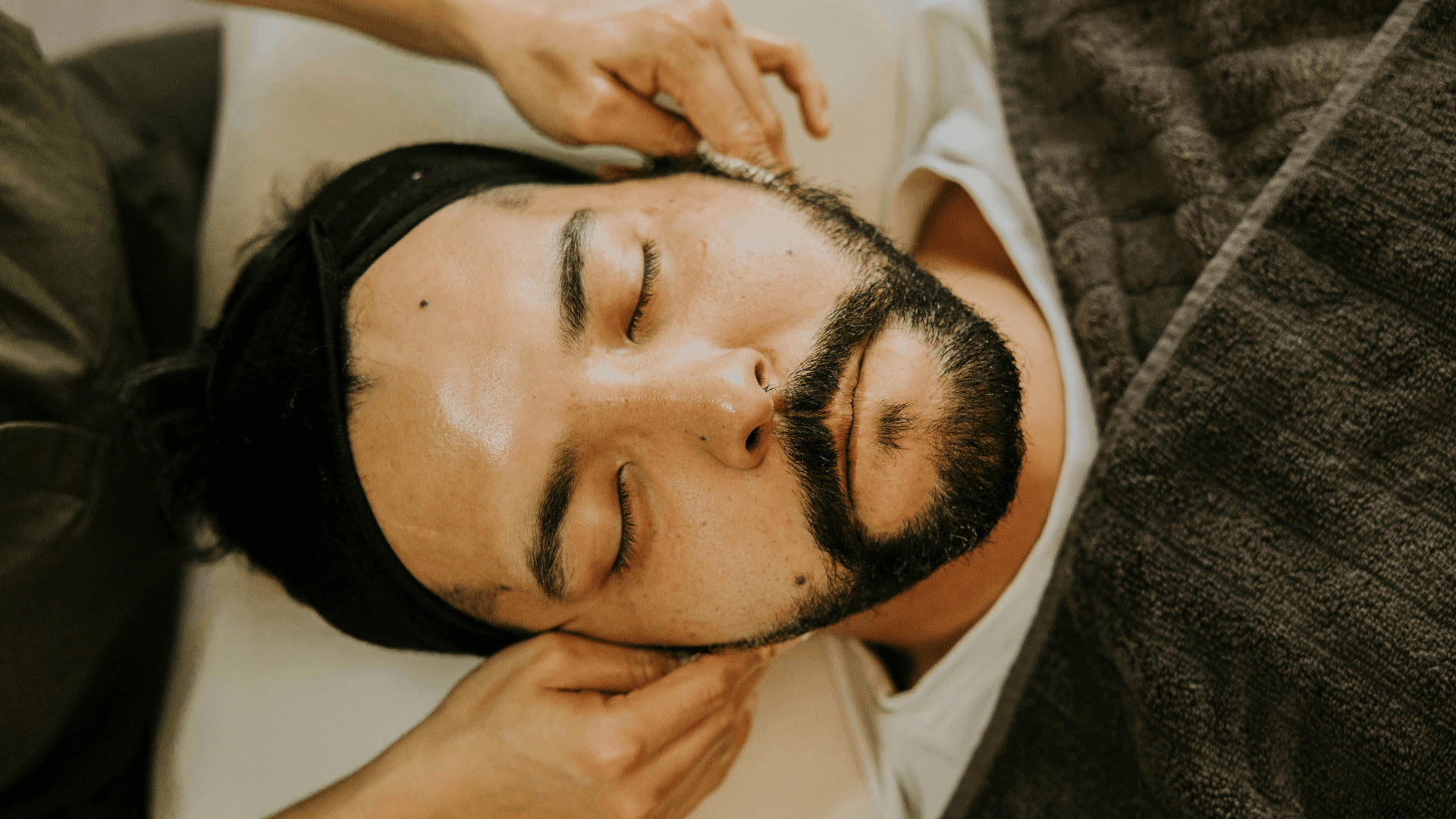A perfect shave doesn’t start with the razor—it begins with proper skin preparation. Skipping key prep steps can lead to irritation, razor burn, and uneven results. Here are 10 often-overlooked skin prep steps for a flawless, smooth shave.
1. Start with a Clean Face
The foundation of a flawless shave begins with clean skin. Washing your face with a gentle cleanser ensures that dirt, excess oil, and dead skin cells are removed before you start shaving. Skipping this step can lead to clogged pores, which not only increases the risk of acne but also prevents the razor from gliding smoothly across your skin. A clean face minimizes the chances of irritation and razor bumps because it reduces the friction between the razor and your skin.
When washing your face, use lukewarm water to open up your pores and relax your skin. Hot water can dry out your skin, while cold water can constrict pores, making it harder to achieve a smooth shave. Gently massage your cleanser into your skin using circular motions, ensuring you cover all areas, especially the beard area. Rinse thoroughly and pat your face dry with a clean towel. This simple but effective step lays the groundwork for a comfortable and irritation-free shave.
2. Exfoliate Before Shaving
Exfoliation is a game changer when it comes to achieving a close and smooth shave. Many skilled New York barbers emphasize this important step because exfoliating helps lift away trapped hairs and remove the layer of dead skin that often accumulates on the surface. If left unaddressed, these layers of dead skin can block the path of the razor, causing uneven shaving and increasing the risk of ingrown hairs. By exfoliating, you prepare your skin to allow the razor to glide more effectively, cutting closer and more evenly.
You can exfoliate using either a mild facial scrub or a soft facial brush, depending on your skin type and personal preference. If using a scrub, choose one with gentle, rounded particles that won’t create micro-tears on the skin. Apply a small amount to damp skin and gently massage in circular motions, focusing on areas with dense beard growth. Avoid overly aggressive scrubbing, as this can irritate your skin and counteract the benefits of exfoliation.
Alternatively, a soft-bristled facial brush can work wonders. Whether manual or electric, these brushes stimulate your skin, help loosen any trapped hairs, and leave your face feeling refreshed. Make sure to use light pressure and short strokes to avoid irritation. Exfoliate no more than two to three times a week to prevent over-sensitizing your skin, but if you’re preparing for a shave, it’s wise to include this step right beforehand. After exfoliating, rinse your skin thoroughly with lukewarm water to remove any leftover particles or debris. Your skin will feel smoother, more refreshed, and perfectly prepped for the next steps in your shave routine.
3. Use Warm Water to Soften Hair
Starting your shave routine with warm water is a crucial step for achieving a smoother, more comfortable experience. The warmth helps to open up the pores and soften the facial hair, making it much easier to cut through. You can do this by splashing warm water directly onto your face for a few moments or, for a more luxurious approach, using a warm towel. Simply soak a clean towel in hot water, wring it out, and then press it gently over your face for about 30 seconds to one minute.
This method not only softens the hair but also relaxes the skin, reducing the likelihood of irritation or razor drag. The process primes your skin and beard for an efficient shave, preparing the hair for smoother removal without excessive tugging or pulling. This simple yet effective step elevates your shaving routine and ensures that your razor glides effortlessly across your face, minimizing discomfort and the potential for nicks or cuts.
4. Apply Pre-Shave Oil
A well-kept secret in professional barbershops, the application of pre-shave oil is an indispensable step in achieving a superior shave. Often utilized by experts like a New York barber, pre-shave oil serves as a protective barrier between your skin and the razor. This product is typically formulated with a blend of natural oils that not only hydrate and soften the skin but also reduce friction, allowing the razor to move effortlessly and smoothly.
To use, dispense a few drops of pre-shave oil into your hands and massage it gently into your skin, focusing particularly on areas prone to dryness or irritation. The oil helps to further soften the beard hairs, making them pliable and easier to cut while minimizing the risk of razor burns and ingrown hairs. Additionally, its hydrating properties nourish the skin, leaving it feeling moisturized and well-cared for. By incorporating pre-shave oil into your regimen, you’ll enjoy a more comfortable, close shave with visibly improved results, ensuring that your skin remains smooth and irritation-free.
5. Choose the Right Shaving Cream
Not all shaving creams are created equal, and selecting the right one can have a significant impact on the quality of your shave and the health of your skin. High-quality shaving creams are formulated with moisturizing ingredients that allow for a smoother glide of the razor, reducing friction and thereby minimizing irritation. When looking for a shaving cream, prioritize those that contain natural oils, glycerin, or aloe vera. These ingredients help create a rich, protective lather that not only hydrates the skin but also softens beard hairs for easier cutting.
Avoid shaving creams containing harsh chemicals, artificial fragrances, or alcohol, as these can dry out the skin and cause discomfort, particularly if you have sensitive skin. Instead, opt for products designed for your specific skin type, whether it’s oily, dry, or prone to acne. Some brands even offer shaving creams infused with soothing agents like chamomile or calendula, which can help reduce redness and calm irritation during the shaving process.
Using the right shaving cream is more than just about comfort—it protects your skin’s natural moisture barrier and helps prevent common issues such as razor burns, nicks, and post-shave dryness. For best results, apply the shaving cream evenly using a high-quality shaving brush. The brush not only ensures a uniform application but also helps lift the hair, allowing the razor to cut closer to the skin. Taking the time to choose a proper shaving cream tailored to your specific needs will set the foundation for a smooth, irritation-free shave every time.
6. Use a Sharp, Clean Razor
The quality and condition of your razor play a pivotal role in achieving a close, comfortable shave. Using a dull or dirty razor can lead to a host of problems, including nicks, cuts, and razor bumps. A dull blade requires more pressure to shave effectively, which increases the likelihood of irritation and uneven results. On the other hand, a clean and sharp razor glides effortlessly across the skin, minimizing friction and reducing the risk of pulling or tugging at the hairs.
To ensure optimal results, replace your razor blade regularly. How often you change it depends on factors such as your hair thickness and frequency of shaving, but as a general rule, every five to seven shaves is recommended. If you notice any tugging, discomfort, or signs of rust or wear on the blade, it’s time for a replacement. Investing in high-quality blades and razors can make a noticeable difference in both performance and the longevity of your tools.
Proper razor hygiene is equally crucial. Always rinse the blade thoroughly under warm water after each pass to remove hair, shaving cream, and dead skin cells. This prevents buildup that could clog the razor and compromise its efficiency. For added cleanliness, consider soaking the blade in alcohol or using a razor sanitizer between shaves to eliminate bacteria. This is especially important if you’re prone to acne or other skin sensitivities, as a dirty razor can introduce bacteria to freshly shaved skin, leading to breakouts or infections.
When shaving, use gentle, short strokes and avoid applying excessive pressure. Allow the razor to do the work, and follow the natural direction of hair growth to minimize irritation. If your razor has multiple blades or a pivoting head, these features can enhance the shaving experience by adapting to the contours of your face for a smoother result. By maintaining a sharp and clean razor, coupled with proper technique, you’ll achieve a better shave while keeping your skin healthy and free from irritation.
7. Shave in the Direction of Hair Growth
Shaving in the direction of hair growth is essential to achieving a comfortable and irritation-free shaving experience. While it may seem tempting to shave against the grain for a closer result, this practice often increases the risk of razor bumps, ingrown hairs, and skin irritation. When you shave against the natural growth pattern of your hair, the blades are more likely to tug at the hair follicles, causing microscopic tears in the skin and promoting inflammation.
For those with sensitive skin, shaving with the grain first provides a gentle approach that minimizes stress on the skin. To determine the direction of your hair growth, lightly run your fingers over the area you plan to shave and identify the smoother direction. Begin your shave with light, controlled strokes following this natural direction, letting the blades glide effortlessly. If a closer shave is required after shaving with the grain, you can carefully perform a second pass across or slightly against the grain, but only in areas where your skin is less prone to irritation.
Ensuring proper preparation is also critical when shaving with the grain. Always start with a warm shower or use a warm towel to soften the hair and open up the pores. Using a high-quality shaving cream or gel is equally important to provide enough lubrication and keep the razor moving smoothly. By adhering to these practices and prioritizing shaving in the direction of hair growth, you can significantly reduce discomfort and maintain healthy skin over time.
8. Try a Post-Shave Balm
After completing your shave, the next critical step is to take proper care of your skin, and using a post-shave balm can make a world of difference. Shaving leaves your skin vulnerable, as the razor removes not only hair but also a thin layer of skin cells, which can cause dryness and irritation. A soothing post-shave balm is specially formulated to address these concerns by calming the skin, reducing redness, and restoring essential hydration.
Unlike traditional aftershaves that often contain high levels of alcohol—leading to a burning sensation and further skin dryness—alcohol-free balms are much gentler. These products are designed with nourishing ingredients like aloe vera, chamomile, and vitamin E, which work together to soothe sensitive or irritated skin. Applying a post-shave balm after rinsing off any excess product or debris helps lock in moisture and creates a protective barrier to shield the skin from environmental irritants.
Many professionals also emphasize the importance of Game-Changing Products that cater to various skin types and conditions. For example, if you have particularly dry or flaky skin, opt for a balm with added hydrating agents like shea butter or glycerin. On the other hand, balms containing anti-inflammatory components work wonders for those prone to redness or razor bumps. To apply, gently massage a dime-sized amount of the balm onto clean, dry skin using circular motions. This not only helps with absorption but also stimulates circulation, leaving your face feeling refreshed and nourished.
By incorporating a high-quality post-shave balm into your routine, you can protect your skin from the adverse effects of shaving while enjoying a smoother, healthier appearance. Whether you’re new to shaving or a seasoned professional, this step is a simple yet effective way to elevate your grooming ritual.
9. Rinse with Cold Water
After completing your shave, rinsing your face with cold water is an essential step that should not be overlooked. Cold water helps close the pores that were opened by the warm water and steam used earlier in the process. This tightening of the pores reduces the likelihood of irritation or debris clogging them, which can lead to irritation or breakouts. Additionally, the refreshing sensation of cold water works to soothe any redness or sensitivity caused by shaving, leaving your skin feeling rejuvenated and calm.
To perform this step properly, splash your face generously with cold water. You might need multiple splashes to fully remove any residual shaving cream, hair, or product left on the skin. Pay extra attention to areas that might have been more heavily shaved or where you applied stronger pressure during the shave. For those who prefer a more targeted approach, using a clean, soft towel soaked in cold water and gently pressing it against your face can also achieve the same benefits. Not only does this provide a cooling effect, but it can help reset and invigorate your skin as well.
Beyond its immediate effects, rinsing with cold water post-shave can enhance your skin’s overall fitness by fostering resilience to irritation. This simple yet effective step prepares your skin for the final stages of your grooming routine, ensuring it is ready to absorb moisturizers and other care products more efficiently.
10. Moisturize for Lasting Smoothness
The process of shaving can strip your skin of natural oils, leaving it vulnerable to dryness and flakiness. To combat this, applying a lightweight moisturizer is a vital final step to lock in hydration and provide essential nourishment to the skin, ensuring it remains smooth, supple, and healthy.
When selecting a moisturizer, focus on quality and functionality. Look for non-greasy formulas that absorb quickly into the skin without leaving a sticky residue. Ideally, your moisturizer should contain hydrating ingredients such as hyaluronic acid or glycerin. These components help to retain water within your skin cells, delivering sustained hydration throughout the day. Additionally, it’s beneficial to consider moisturizers with soothing agents like aloe vera or chamomile if your skin is prone to sensitivity post-shave.
To apply, dispense a small amount of the moisturizer onto your fingertips—roughly the size of a pea or dime, depending on your skin’s needs. Using clean hands, gently massage the product into your skin using upward motions. Pay close attention to areas that may feel dry or irritated and be mindful of applying even coverage across your face and neck. Remember, less is more; avoid overloading your skin with excess product, which could clog pores and negate your efforts.
Moisturizing not only rejuvenates your skin following the abrasiveness of shaving but also establishes a protective barrier against environmental factors such as pollution and varying weather conditions. For additional benefits, consider using a moisturizer with broad-spectrum SPF protection during daytime grooming routines. This will safeguard your skin from sun damage while keeping it hydrated and smooth.
Final Thoughts
Achieving a flawless razor shave in New York is not solely about the technique of using the razor; it’s about what you do before, during, and after the shave. Proper skin preparation and aftercare are crucial components of a successful shaving routine. Following these 10 steps—from exfoliating and cleansing to finishing with cold water rinses and moisturization—ensures your skin is left smooth, irritation-free, and healthy.
Investing time into a comprehensive shaving regimen allows you to elevate your grooming practice, whether you are shaving in the comfort of your home or enjoying the expertise of a professional barber. By incorporating these steps into your routine and selecting high-quality grooming products, you not only enhance your appearance but also nurture your skin, making every shave a satisfying and confidence-boosting experience.


